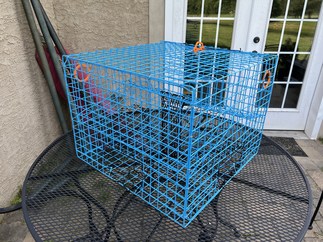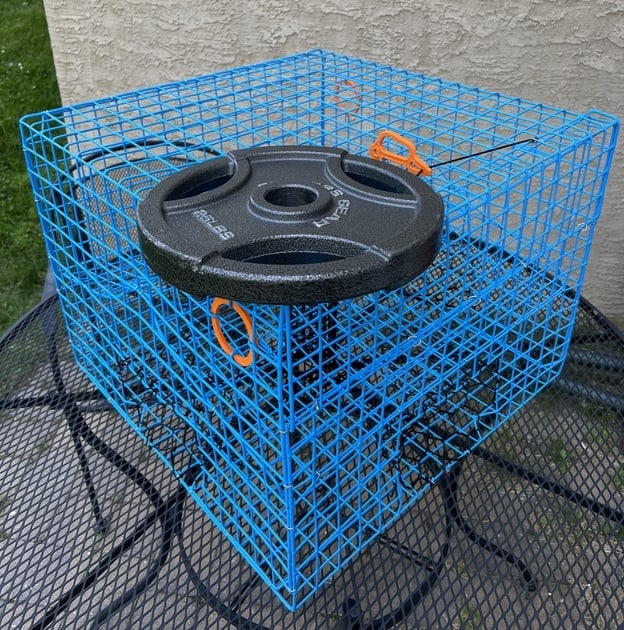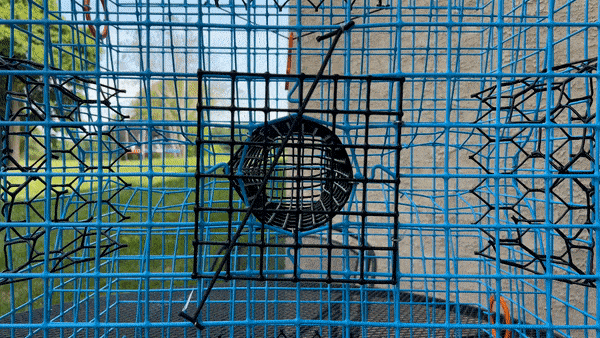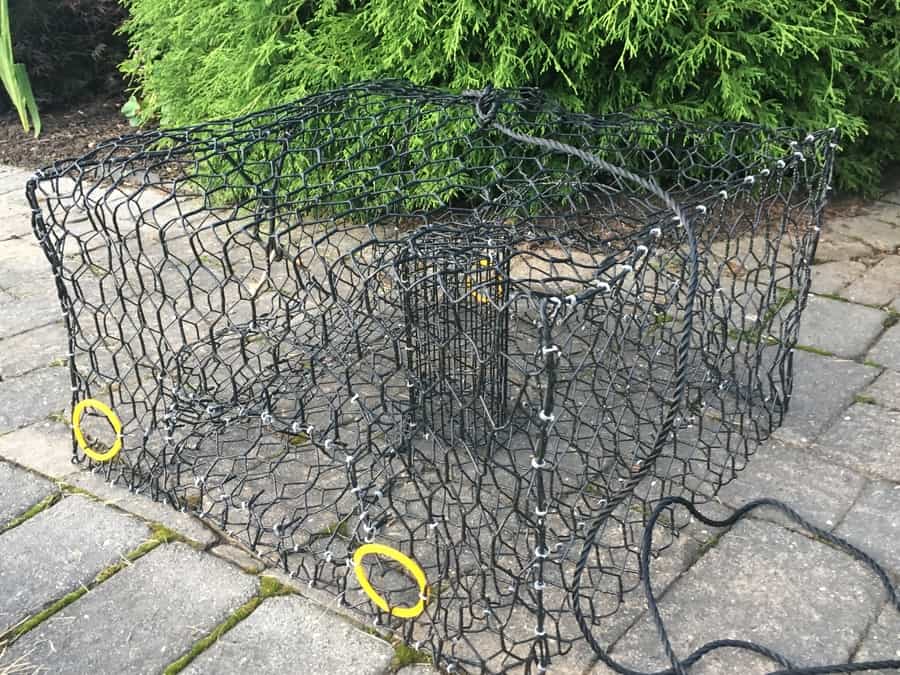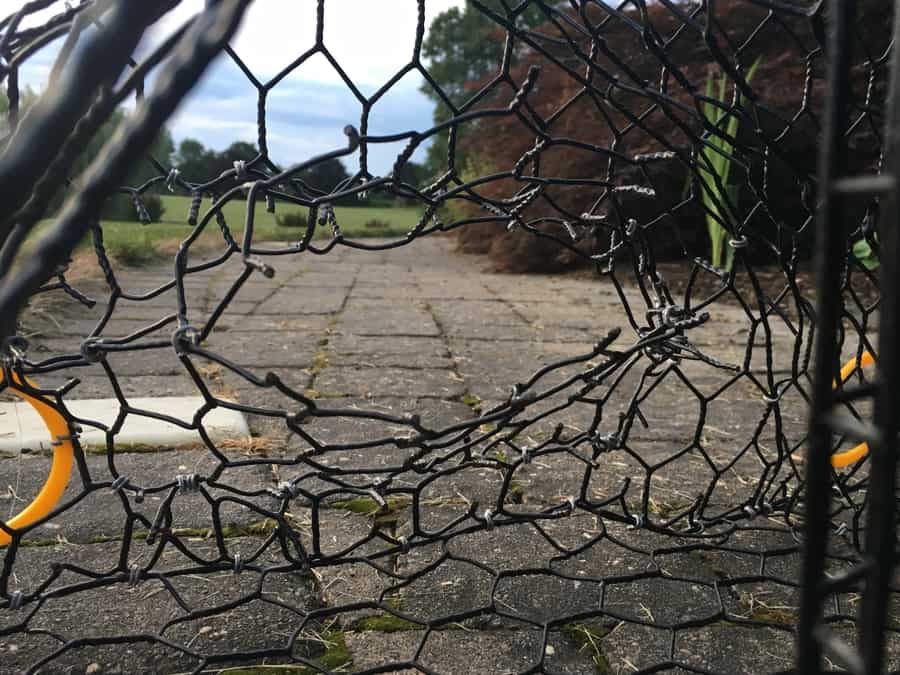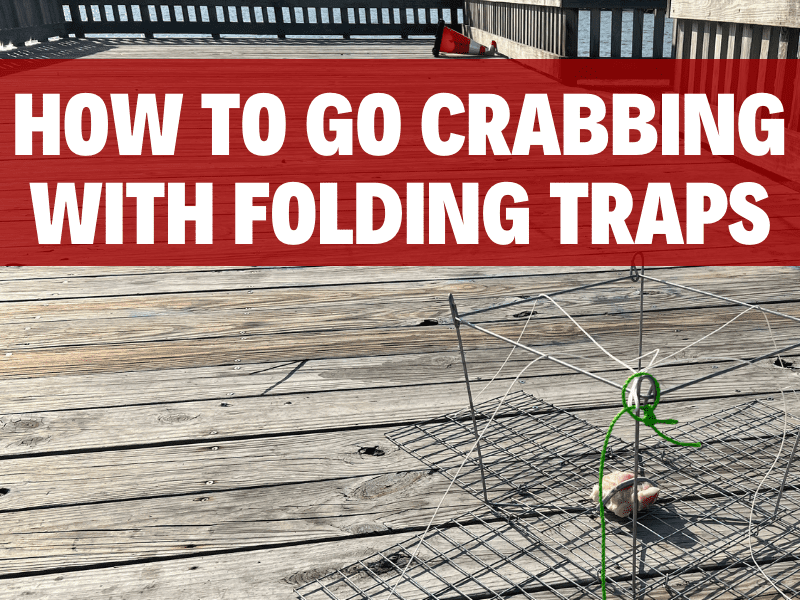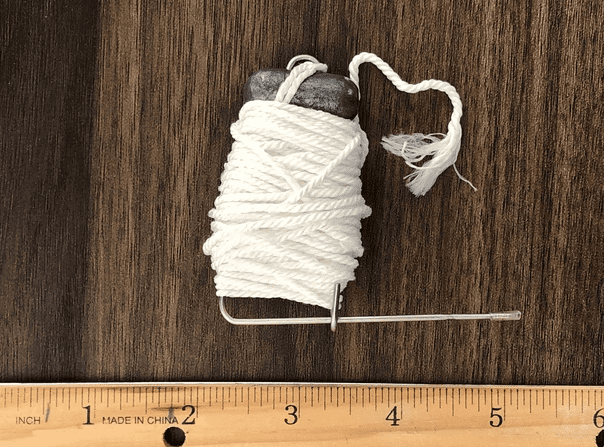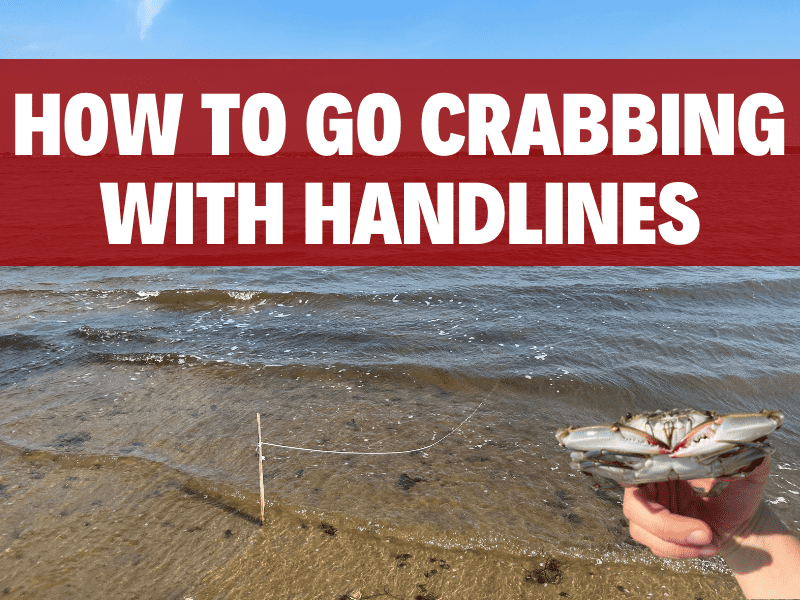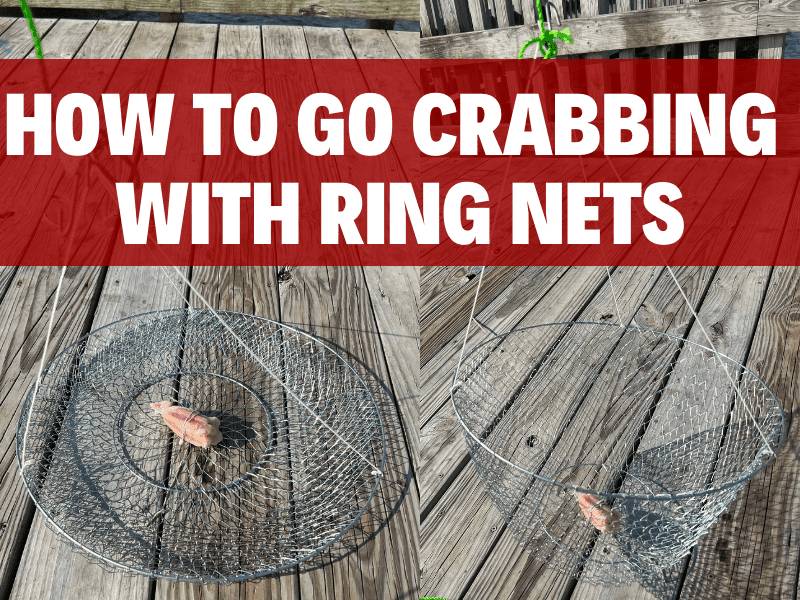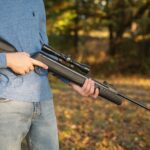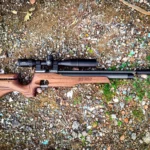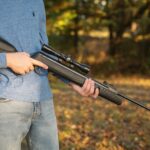FIRST, SOME HISTORY
Well, here’s a surprise! Although HAM has kept you covered on Benjamin Bulldog progress since before its launch, we’ve never published a comprehensive shooting test review before. So now we’re shooting the Bulldog M357!
The Benjamin Bulldog was first launched at the 2015 SHOT Show. But there had been a “sneak peak” before this. On 14 July 2014 – yes, nearly nine years ago! – HAM brought you the first, brief, details of a new .357 caliber replacement for the Benjamin Rogue.

This was the first sighting of the Bulldog. It was certainly demolishing cinder blocks at 55 yards and we were all mightily impressed!
Since that time, HAM has featured the Bulldog occasionally. I shot it myself in June 2019 – as you’ll see below – but for some now long-forgotten reason the story was not published.

Then in 2021, we carried this story about the best way to mount a bipod on the Bulldog. It’s the Leapers UTG Over Bore Bipod.

That information is even more pertinent for the Benjamin Bulldog M357 because the new model has no Picatinny rail under the forend (as the first model did). If you want to use a bipod with the M357, an above bore model is the only way to go.
BUY FROM AMAZON UTG TL-BPOB01-A Over Bore Bipod, 7″-11″ Center Height, Picatinny
Then, in March 2024, HAM carried a first look at the new Benjamin Bulldog M357. We liked what we saw, but a vacation (good) and a long bout of COVID (bad) meant that it’s taken until now to actually shoot the gun under controlled test conditions and publish this comprehensive test review.

VALUE FOR MONEY
Selling for $929.99, the Benjamin Bulldog M357 is attractively-priced for a “true” big bore air rifle combining a power level approaching 300 Ft/Lbs with magazine feed and a five-year warranty. In fact, when you look around, you’ll find that there are very few other airguns that can match these core specifications!
Many US buyers will be pleased to find that the Bulldog is designed and assembled in Velocity Outdoors’ Bloomfield NY headquarters. Most of the parts are sourced in the US too, although the use of a German Lothar Walther barrel is definitely an acceptable exception.
So, on a “bang for the buck” basis, the Bulldog has to be a very strong contender.
BUY FROM PYRAMYD AIR Benjamin Bulldog .357 Bullpup, Shrouded 0.357 Hawke Sidewinder 30 SF 6-24×56, 20x Half Mil IR Reticle, 30mm Tube
SPEED AND ACCURACY
For this HAM review, I tested the Benjamin Bulldog M357 with two types of Benjamin slugs.

Shooting at 25 Yards, the 145 Grain Benjamin Nosler Ballistic Tip eXTREME slugs gave an excellent 5-shot group of well under 1-Inch CTC.
The average Muzzle Energy across the five shots was 234.9 Ft/Lbs. The first shot gave 257.4 Ft/Lbs as it had the highest velocity.

By comparison, the 147 Grain Benjamin .357 Slugs gave a looser group of under 2-Inches CTC at 25 Yards. But it should be remembered that these slugs are half the price of the Nosler eXTREMEs!
Muzzle Energy was higher at an average of 249.4 Ft/Lbs. The first shot gave 269.2 Ft/Lbs.

As mentioned elsewhere, the Bulldog was never designed as a target rifle! So the group with the Nosler eXTREME slugs was definitely very acceptable hunting accuracy at 25 Yards.
COMPARISON WITH ORIGINAL BULLDOG
It’s interesting to compare the groups above with a group I shot back in 2019 using an original-model Bulldog and Nosler eXTREME slugs.

This group is slightly tighter than for the M357. But – given the shooter’s capabilities – I’d say they demonstrated very similar accuracy. In the case of the “old” Bulldog, the average Muzzle Energy was 182.1 ft/Lbs.
Comparing “5-shot average” Muzzle Energies, the M357 thus delivers a 29% increase in Muzzle Energy against the original version and with very similar accuracy. That’s definitely a very worthwhile improvement!
TRIGGER AND COCKING EFFORT
The Benjamin Bulldog M357 has a two-stage, non-adjustable trigger. The metal blade is comfortable in use and well-placed. It’s accompanied inside the trigger guard by a push-pull manual safety.
This safety design is very practical because it makes the shooter immediately aware if it’s engaged. It’s close to impossible to put your finger on the trigger!

Note that there is no externally-available methods for adjusting the Bulldog’s trigger. It is what it is…
However, sear release was quite predictable in the gun tested by HAM, with a fairly clean brake. All-in-all, this is a good hunting trigger, which is what it was designed to be.

The Bulldog is cocked using a rear-mounted side lever. This requires a fair – although not unreasonable – amount of effort to operate.
The location of the side lever requires that any Bulldog is removed from the shooting position. I found it most comfortable to rest the buttpad against my hip while actuating the side lever. This is understandable, however it does mean that a second shot is not available instantaneously, in spite of the magazine feed.
The side lever can be changed to operate from the left (other) side of the gun if required. However, this is a job that should be undertaken by a Crosman Repair Center if warranty is to be retained. For example, you can request such a service if ordering your Bulldog from Pyramyd Air.
COMPARISON TO MANUFACTURER’S CLAIMS
The manufacturer claims a peak Muzzle Energy of 300 Ft/Lbs for the Benjamin Bulldog M357.
True, the maximum Muzzle Energy developed during this HAM test was 269.2 Ft/Lbs using 147 Grain slugs.
However, knowing that the Muzzle Energy of PCP air rifles inevitably increases with projectile weight, it’s very likely that shooting a heavier slug will attain the claim. Consider that the .357 caliber ammo available now ranges up to 212 Grains…
CONSISTENCY
The Benjamin Bulldog M357 is not regulated. This is understandable in a big bore hunting air rifle. The result is that the gun loses power with every shot.
Fortunately this decline in power is very predictable at about 20 FPS drop per shot, as the following shootdown chart shows.

For HAM testing, I topped-up with HPA after every 5 shots – one magazine’s capacity. I’m guessing that most M357 owners will adopt a similar refilling strategy to avoid too many shots striking low.
The average pull weight of the trigger on the Benjamin Bulldog M357 tested by HAM was 4 Lbs 3 Lbs. The lightest pull recorded was 4 Lbs 0 Oz, the heaviest 4 Lbs 11 Oz. So, trigger pull weight consistency was pretty good.
NOISE LEVEL
As with other members of the family, the Benjamin Bulldog M357 includes the company’s baffle-less, triangular shroud. However be aware, it’s loud. Like “ear defenders required” loud!
No Bulldog is going to be “backyard-friendly”, but then it’s designed as a hunting gun, not an all-day, family plinker. The design expectation is obviously that you’ll be shooting it in wide open spaces.
Some owners will be pleased that the M357 is fitted with M18 threads at the muzzle. These are covered with a knurled cap when not in use, but provide the capability to add a big bore airgun-specific silencer where legal.
However, fitting a silencer will obviously increase the overall length of the gun – thus somewhat defeating the purpose of the compact, 36-Inch overall length, form factor that is a major part of the product’s attraction.
SIGHTS AND SCOPE
In preparation for our shooting tests, I mounted a Hawke Sidewinder 6-24 x 50 FFP scope using Hawke 30 mm High Tactical Match Rings.
With its’ 24x magnification and sharp optics, the Sidewinder gives plenty of “reach” for long-range shooting. The rings are definitely sturdy, too, with their six screw top fixing.
To gain the correct eyeline, I also fitted a 0.75-Inch high Leapers UTG Super Slim Picatinny Riser between the rings and gun. This raised the scope sufficiently to enable a comfortable sight picture to be achieved without straining my neck.
You’ll probably find that you need a riser, too…

We should also mention that the Bulldog’s almost-endless top Picatinny rail allows for enormous flexibility in scope mounting. There’s pretty-well no scope that can’t be mounted on this air rifle, however long it is. That’s a major benefit right there that should not be ignored!
SHOOTABILITY
Alt 36-Inches overall – the Benjamin Bulldog M357 is not long However it’s definitely a chunky airgun! With scope mounted, the all-up weight was 10 Lbs 14 Oz. That’s a fairly substantial weight, hence the overbore bipod mentioned elsewhere in this review.
That compact length makes the Bulldog surprisingly easy to shoot offhand. Yes it’s heavy, but it balances well and naturally, making it relatively easy to hold on target. Most big bore air rifles are longer – some much longer – than the M357 as longer barrels are an easy way to increase Muzzle energy with PCPs.
Loading the detachable 5-round magazine is easy enough – once you remember to keep a finger in place to stop the slugs from falling through! Unlike most magazines, you do not rotate the rotor all the way and then let it return as you load. You rotate a little, load one, then repeat as necessary.
This is a practical and easy method of operation, especially if you just want to “top up” the magazine after taking a couple of shots.

The magazine is loaded downwards into the breech. This is simple and easy to do. The only requirement is to be sure that the cocking lever is pulled all the way back as you do so.
At just $18.99, these .357 caliber Bulldog magazines are among the cheapest in the market. That makes it a good plan to buy several…
APPEARANCE AND FINISH
OK, I have to be honest. I really do not like the look of the Bulldog!
However, there’s an old English expression that “handsome is as handsome does”. Thinking of this and – maybe – the familiarity that happens over time, makes the looks less polarizing than when the gun was first introduced back in 2014.
I still do not think the Benjamin Bulldog M357 is a great-looking gun. But I can live with it!

The finish of the Benjamin Bulldog M357 tested by HAM was OK. The clamshell synthetic stock moldings are good enough. However the seam between them is pretty pronounced.
The sheet metal shroud of the test gun was fine on one side, but the finish was imperfect on the other. (It was easy enough to see, but tough to photograph).
Does that matter? Maybe not for a “working gun”, as there’s nothing to cause a problem. But for a price approaching $1K, my expectations would be higher…
BUYING AND OWNING
As with many Velocity Outdoor models, the Benjamin Bulldog M357 carries an outstanding 5-year return-to-factory warranty.
The gun ships with the company’s usual-style owner’s manual. This includes much information and many illustrations, but crams it all in at a minimum type size, making it difficult to read.
Also included is one magazine, a tube of Crosman Pellgun Oil together with a pack of “Bore Tips” for lubricating and barrel cleaning. Thanks Velocity Outdoor!
Another practical point for the bulldog is that the designers included sling swivel mounting points forward and rear. As the Benjamin Bulldog M357 is a heavy gun and you’ll be carrying it for hunting, a good sling and pair of swivels will be an excellent additional investment.

There’s good news about filling the Benjamin Bulldog M357 with High Pressure Air. First is that “only” 3,000 PSI is required for a full fill. This means that you will get more fills from a tank or shorter compressor run times than other comparable PCPs using a higher fill pressure.
Secondly, the Bulldog incorporates a “Foster standard” male quick disconnect for filling. In my testing and analysis for this HAM investigation, I found that Benjamin PCPs comply better with this standard than some other companies.
Another great feature is that – just ahead of the fill nipple and almost-hidden down in that slot – is a degassing screw. Operated with a 3/32-Inch Allen (hex) wrench, this allows all pressure to be released from the Bulldog, if required. It’s a great safety feature, even if you’re not likely to use it often.

However, the fill nipple area is covered by a “snap off” cover that I always find troublesome to use. In practice, I leave it off when shooting the Bulldog, which is not ideal. But it does stop me from loosing the item…
That’s it – the wrong way round! – in the photograph above.
One other consideration for the Bulldog M357 owner is the length of the slugs that you plan to shoot through the gun.
The M357’s magazine accepts the 145 Grain Nosler eXTREME as about a practical maximum length. The specification for these slugs is 18.71 mm long. Looking at the magazine, it’s pretty clear that somewhere around this length is the maximum that could be magazine-fed into the Benjamin Bulldog M357.
As an alternative, the M357 can be single-loaded by opening the bolt and pushing the slug into the barrel by hand. (Yes, it’s fiddly, but it can be done). In this case, the maximum slug length would be around 21 mm (0.8 Inches).
This means that, for example, 178 Grain NSA slugs should fit, but that Seneca 212 Grain ammo is never going to make it into the M357, even with hand loading. Some testing is going to be involved if you want to use ammo longer than around 19 mm (0.750-Inch) and be aware that it’s likely not to fit into the magazine.
BUY FROM PYRAMYD AIR Benjamin Bulldog .357 Bullpup, Shrouded 0.357 Hawke Sidewinder 30 SF 6-24×56, 20x Half Mil IR Reticle, 30mm Tube
This entire article including scoring, test targets etc is Copyright Hard Air Magazine and may NOT in part or in whole be reproduced in any electronic or printed medium without prior permission from the publisher.








![Air gun 101: The differences between .177 & .22 – Which jobs they do best ? [Infographic]](https://airgunmaniac.b-cdn.net/wp-content/uploads/2024/11/1773-218x150.jpeg)
















































